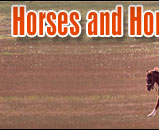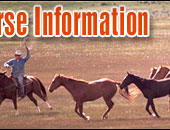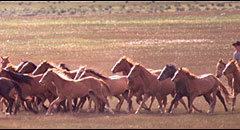 |
   |
|
|
|
You are here: Horses > Horse nutrition / feed > Feed Tags |
How to Decode a Horse Feed Ingredients Tag
The tag on your horse’s feed will provide you with the information you need to
ascertain what the ingredients are, how much to feed to the animal, and savvy
shoppers will also be able to tell a lot about the quality of the feed.
|
|
|
Yet did you know that not all tags are similar? There is a
bit of a mystery surrounding the proper reading and
understanding of feed tags, and here are some tips on how to
make heads and tails of what you are reading:
- If the tag lists an extensive list of nutrients as well as ingredients,
you are dealing with a feed that is often referred to as a “fixed
formula,” and the upside of using such a feed rests in the fact that it
will permit for consistent feeding, since the formula is not changing.
|
- Remember that – unless stated specifically – you will not be able to
ascertain the quality of the ingredients from the list. Oats come in
different bushel weights but unless your tag tells you what weight was
used, all you know is that there are oats in the feed bag. Protein may
come for a variety of sources, but not all of them are considered
beneficial. One tip for those who are concerned about the quality of the
protein in their feed: check for the lysine level guarantee. While the
amount of the protein is important, the amino acid content ensures
digestibility which is key to the horse’s ability to use the nutrients
you are feeding. Generally speaking, soybean meal is an excellent
protein source for adult horses, while milk proteins are used for young
horses.
- Protein level, fat percentage and energy are also listed on the tag
and are of vital importance to your horse’s overall wellbeing. Keep in
mind, however, that the amount of energy listed cannot be broken down
into digestible energy and the indigestible kind! Thus, it is wisest to
make an overall determination on the digestibility of the energy by
turning a critical eye at the fat and fiber contained in the feed. As a
general rule of thumb, the more fat and the less fiber a feed contains,
the more digestible energy is contained therein.
- While consumers like to comparison shop in the supermarket, trying to
compare tags at the feed store is like comparing apples and oranges.
Manufacturers do not use the same energy values for similar ingredients,
nor do they use the same unit measurements.
- Keep an eye on the presentation of the feed. Corn that is
steam-flaked will provide your horse with a higher amount of digestible
energy than a similar amount of simply cracked corn.
- Check out the mineral sources, since digestibility varies widely.
Sulfates are more digestible than carbonates, yet organic mineral
sources are more digestible than sulfates – but they are also more
expensive. If you do not mind spending the money, look for a tag listing
of “chelate” and “proteinate.”
- Vitamins need to be a part of a good feed. Make sure the tag lists
thiamin, riboflavin, niacin, pantothenic acid, choline, folic acid,
pyridoxine, biotin and B-12 as ingredients.
Following these simple tips will keep your horse well fed.

|
Read the next horse nutrition article on Feed Sugar Content from Pure Cane Molasses. |
|
|
|
|
 |
|
|
|
|
|
Horse Education
|
|
|
|
|
Horse Information Topics
|
|
|
|
|
|
|
|
Horse Business Owners
|
| |
Advertise with Us
Have your horse products or services exposed to over 27,000 of our monthly visitors.
|
|
|
|
|
|